Click on images to enlarge
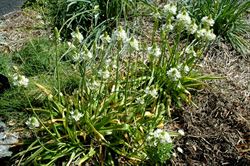
habit (Photo: Rob and Fiona Richardson)
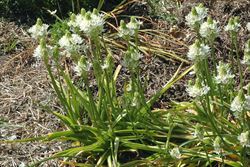
habit (Photo: Rob and Fiona Richardson)
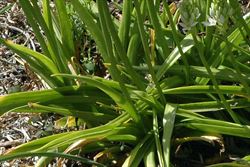
stems and leaves (Photo: Rob and Fiona Richardson)
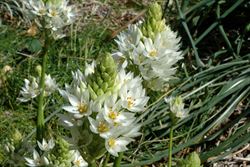
flower clusters (Photo: Rob and Fiona Richardson)
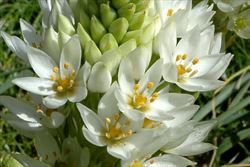
close-up of flowers (Photo: Rob and Fiona Richardson)
Scientific Name
Ornithogalum thyrsoides Jacq.
Family
Hyacinthaceae (New South Wales and Western Australia)Liliaceae (Victoria, South Australia and Tasmania)
Common Names
African wonder flower, black eyed Susan, Cape chincherinchee, Cape lily, chincherinchee, chinkerichee, chinckerinchee, chinkerinchee, common chinkerinchee, cream starflower, star of Bethlehem, star-of-Bethlehem, South African star flower, tub ornithogalum, white star flower, wonder flower, wonder-flower
Origin
Native to south-western Africa (i.e. Cape Province in South Africa).
Naturalised Distribution
Naturalised in some parts of southern Australia (i.e. on the central tablelands of New South Wales, in south-eastern and southern South Australia and in south-western Western Australia).
Notes
Chincherinchee (Ornithogalum thyrsoides) is regarded as an environmental weed in South Australia, New South Wales and Western Australia. This popular bulb-producing garden plant has escaped cultivation and become naturalised in pastures, disturbed sites and natural areas. It is highly invasive and is also recorded as having been responsible for poisoning livestock in Western Australia.
Chincherinchee (Ornithogalum thyrsoides) is currently of most concern is south-western Western Australia, where it is naturalised in the Darling Range near Perth and is also spreading between Kojonup and Albany. It has also been recorded in several conservation areas in South Australia (e.g. Sandy Creek Conservation Park, Belair National Park and Horsnell Gully Conservation Park).

